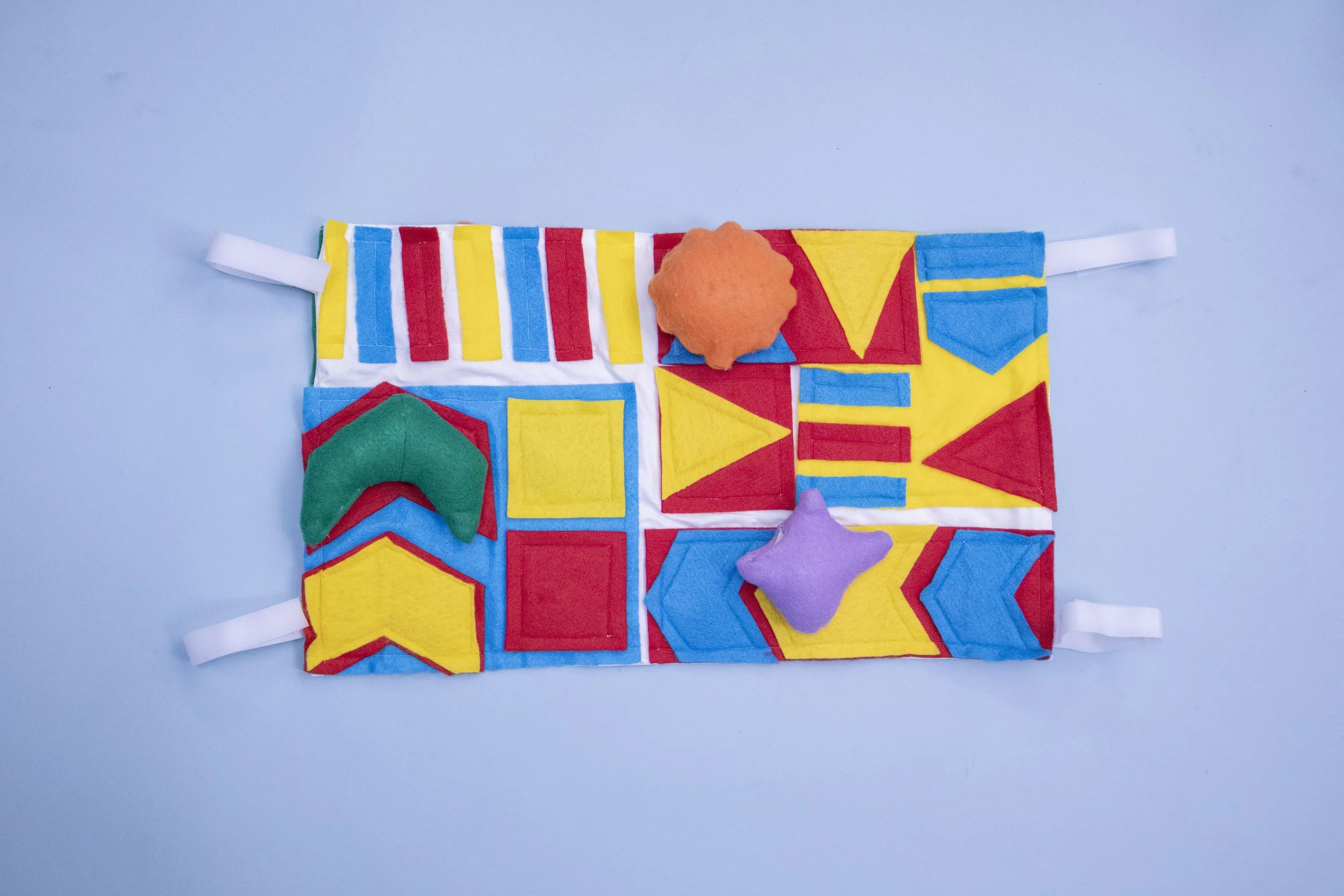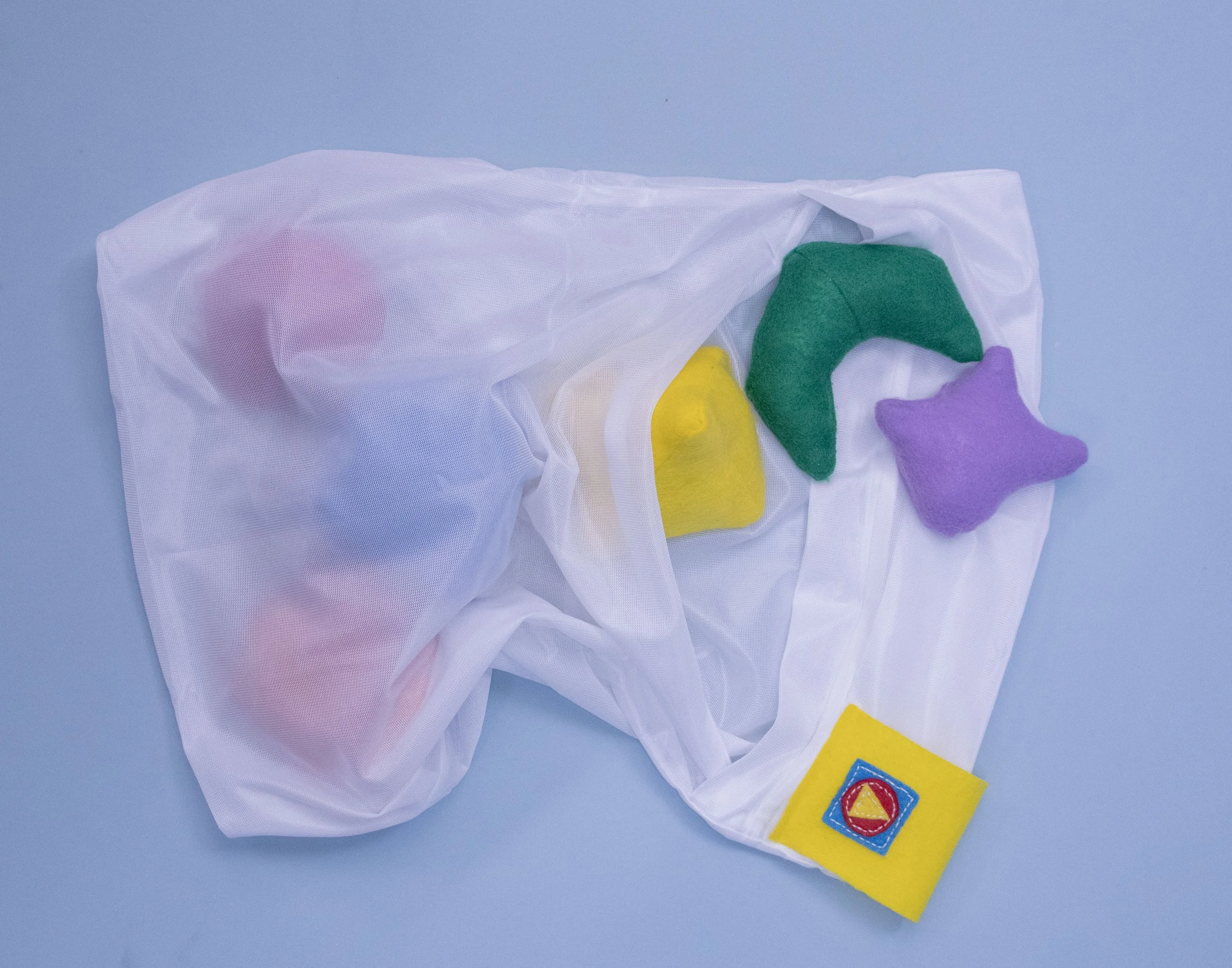Play-Maker
PROJECT TYPE:
Brand Identity | Education Design
DELIVERABLES:
Proof-of-concept Prototype, Packaging, On-site User Testing
SOFTWARE:
Adobe Illustrator, Adobe InDesign, Sewing
COLLABORATION:
Rory Murphy, Ashlynn Whitmire
Play-Maker exists to provide children with the opportunity to choose comfort within high stress situations. Our multi-functional elements allow the child to engage in storytelling and world-building, as our design moves and molds to the needs of the user, adapting to different dimensions and environments. With few rules and boundaries, children find agency when using their Play-Maker. Especially in high-stress environments like hospital waiting rooms, children often don’t have a space to make their own. We created Play-Maker as a pilot program for the waiting rooms at AnMed Anderson, located in Anderson, South Carolina, with the hopes of expanding beyond just local hospitals.
Our solution was to create an object catered to the child’s comfort and creative agency. This product would need to be spatially unobtrusive, easily sterilized, and pliable to the needs of different ages and sizes of children. We also knew it was crucial that the material and character of this product were to be comfortable and inviting. In our ideation, we centered on the three foundational themes of comfort, agency, and opportunity. Comfort, both conceptually and physically, for the child to feel at peace while at play. Agency, both imaginatively and in reality, for the child to maintain authority and capability in story-telling and worldbuilding with multifunctional elements. Opportunity, both in play and in life, for the child to see that they can create and be whatever they can imagine.
Our final product of Play-Maker contains multi-functional elements that have suited all of our conceptual needs. Playmaker is adaptable to each child’s needs. The mobility of the fabric and the product itself provides the child the opportunity to move and play at their leisure. They are given the capacity to decide which shapes to build with, what side of the mat to use, and what story to tell.
We hope to see Play-Maker, and other child-centered objects, implemented across the country. We hope to equip children to become play-makers themselves—calling the shots, building worlds, and feeling at home in a space made by them.







